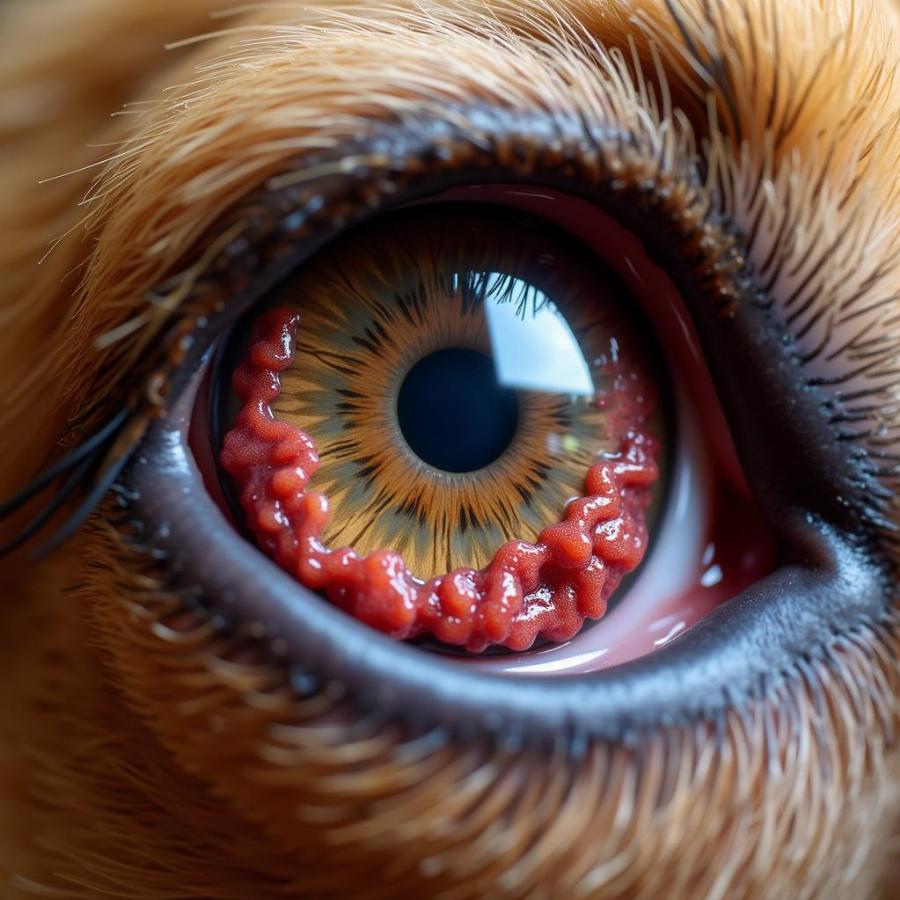Understanding the financial implications of dog eye removal surgery is crucial for pet owners facing this difficult decision. This guide explores the factors influencing dog eye removal surgery cost, providing valuable insights to help you navigate this challenging time.
 Chi phí phẫu thuật loại bỏ mắt chó
Chi phí phẫu thuật loại bỏ mắt chó
Factors Influencing Dog Eye Removal Surgery Cost
Several factors contribute to the overall cost of dog eye removal surgery. Understanding these factors can help you prepare financially and make informed decisions about your dog’s care.
Veterinary Clinic Location and Expertise
The geographic location of the veterinary clinic and the surgeon’s level of expertise play a significant role in determining the cost. Specialized veterinary ophthalmologists often charge more than general practitioners. Similarly, clinics in urban areas may have higher overhead costs, leading to increased surgical fees.
Pre-operative Examinations and Diagnostics
Before surgery, your veterinarian will conduct a thorough examination and perform diagnostic tests, including blood work, urinalysis, and eye imaging. These tests are essential for assessing your dog’s overall health and determining the best course of action. The cost of these tests will vary depending on the specific tests required.
Type of Anesthesia and Pain Management
The type of anesthesia and pain management protocol used during and after surgery will also influence the cost. General anesthesia and advanced pain management techniques may be more expensive but are crucial for ensuring your dog’s comfort and safety.
Post-operative Care and Medications
After surgery, your dog will require post-operative care, including medications, follow-up examinations, and potentially specialized eye drops or ointments. These additional costs should be factored into your overall budget.
Understanding the Procedure and Associated Costs
The enucleation procedure, which involves removing the entire eyeball, generally costs between $500 and $1,500. This includes the surgical procedure, anesthesia, and initial post-operative care. Evisceration, an alternative procedure where the contents of the eye are removed but the outer shell remains, may be slightly less expensive.
Is Dog Eye Removal Surgery Covered by Pet Insurance?
Many pet insurance plans cover medically necessary eye removal surgery. It’s important to review your policy details and understand any coverage limitations or exclusions.
Making Informed Decisions about Your Dog’s Eye Health
While cost is an important factor, your dog’s health and well-being should be your top priority. Consult with your veterinarian to discuss the best treatment options and develop a plan that addresses both your dog’s needs and your financial constraints.
Conclusion
Dog eye removal surgery cost can vary depending on several factors. By understanding these factors and working closely with your veterinarian, you can make informed decisions and ensure your furry friend receives the best possible care.
FAQs
-
What are the signs my dog may need eye surgery? Signs include excessive tearing, squinting, cloudiness, redness, and pawing at the eye.
-
What is the recovery time after dog eye removal surgery? Most dogs recover within two weeks, but complete healing can take several months.
-
Will my dog be able to function normally with one eye? Yes, dogs adapt remarkably well to life with one eye.
-
Are there alternatives to eye removal surgery? Depending on the underlying condition, medications or other treatments may be considered.
-
How can I make my dog comfortable after surgery? Provide a comfortable and quiet recovery area, administer pain medications as prescribed, and follow your veterinarian’s post-operative instructions carefully.